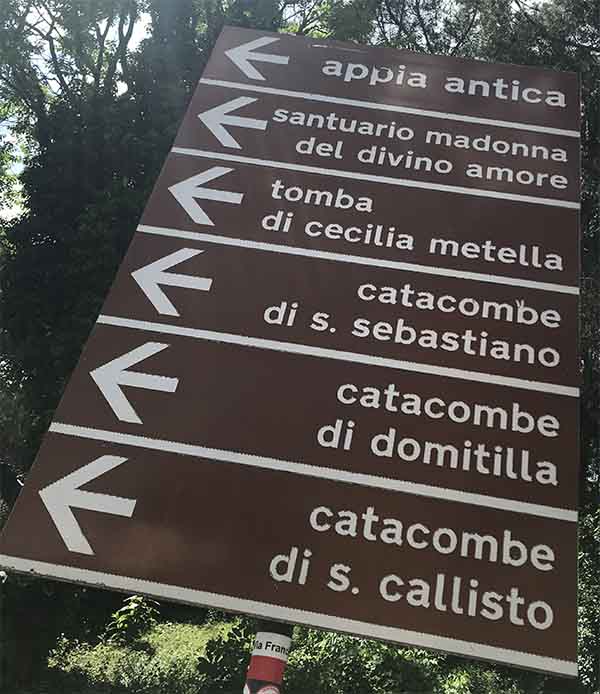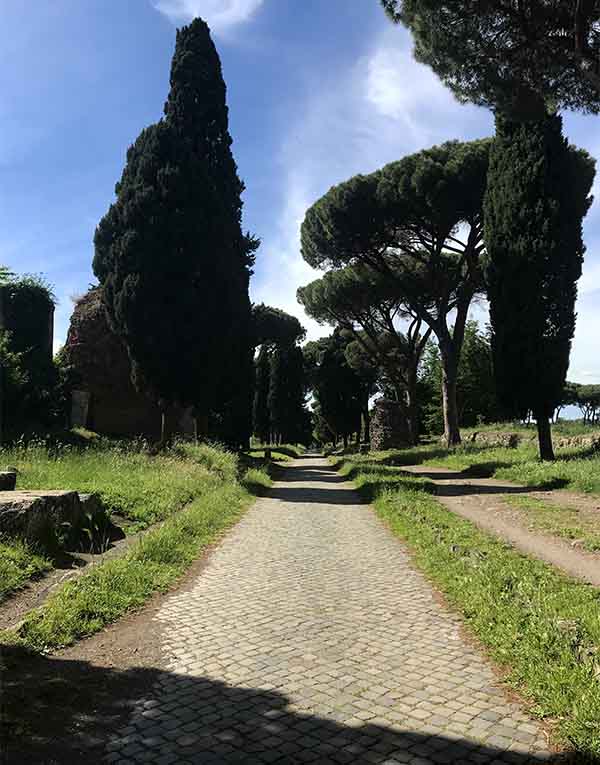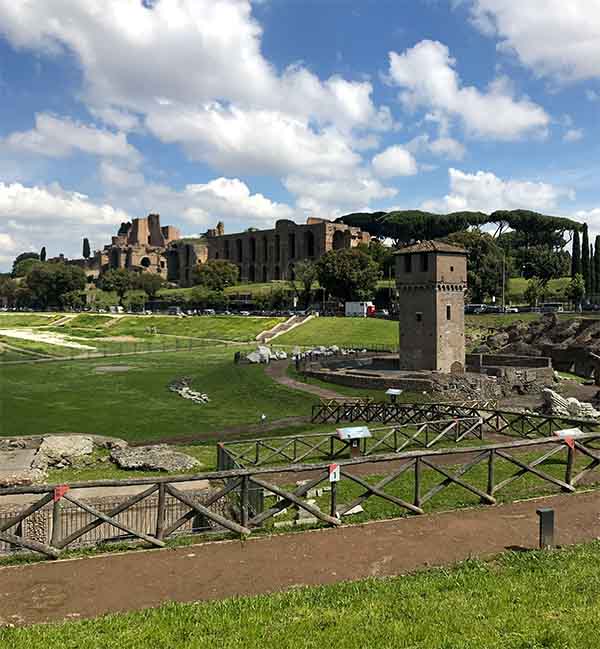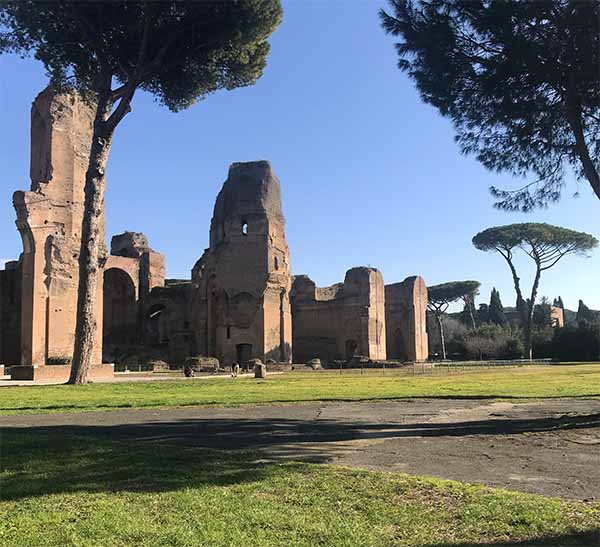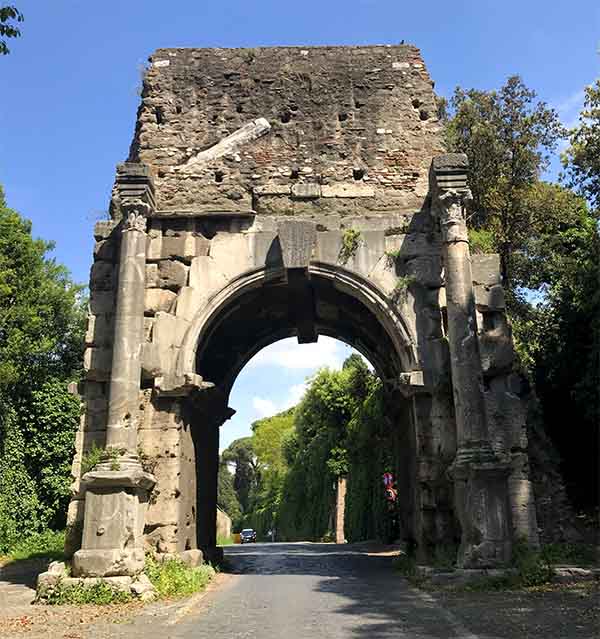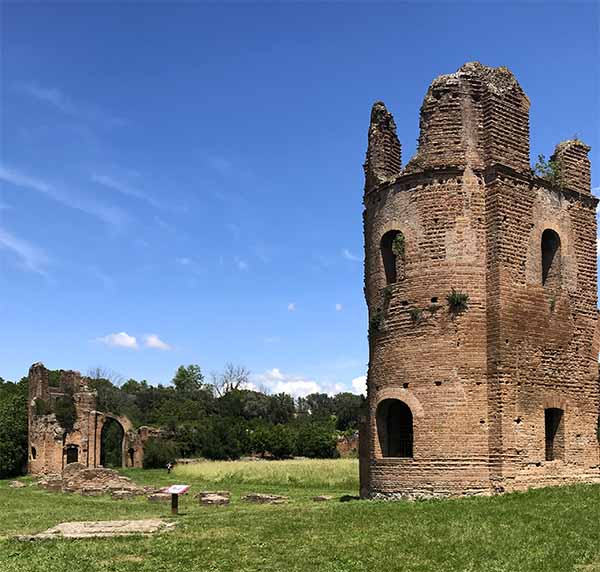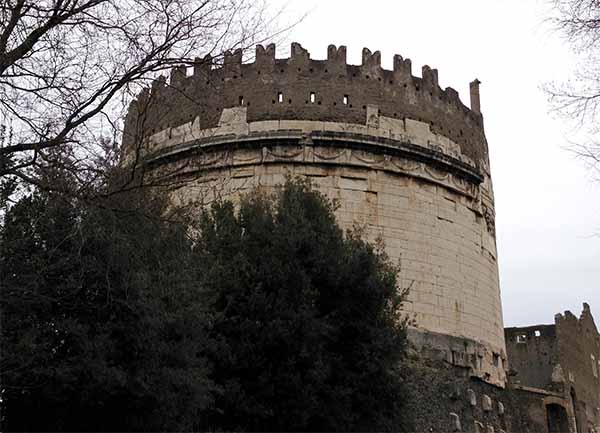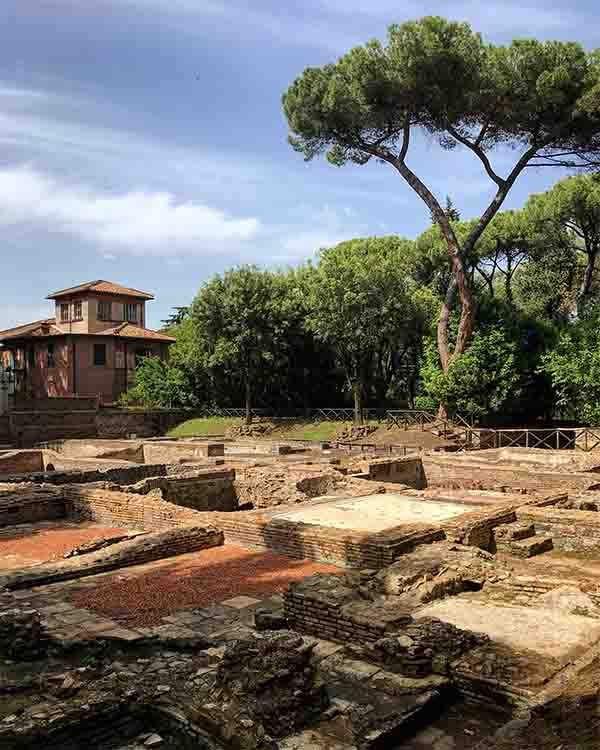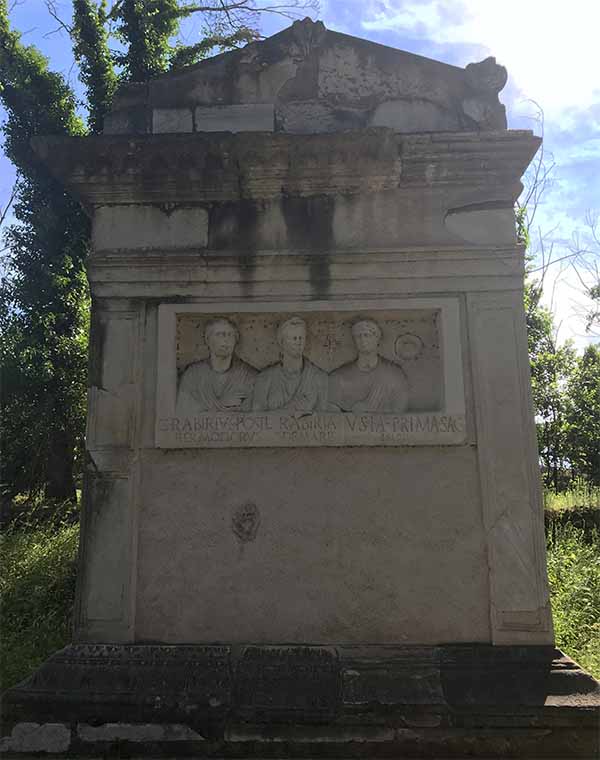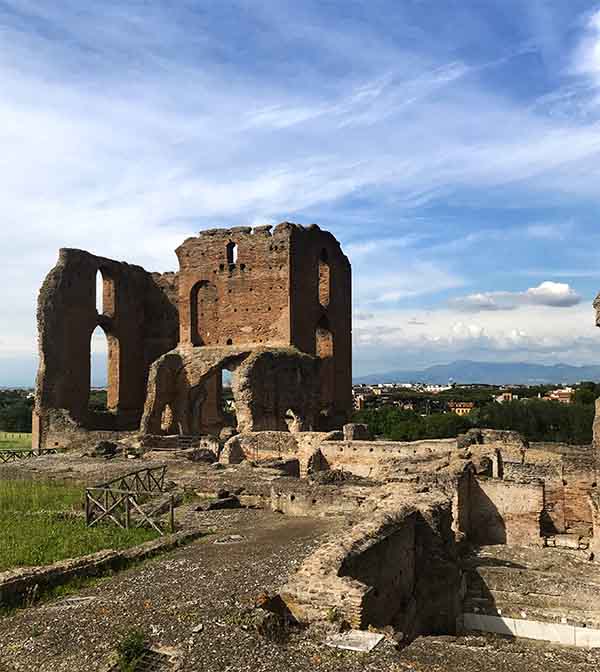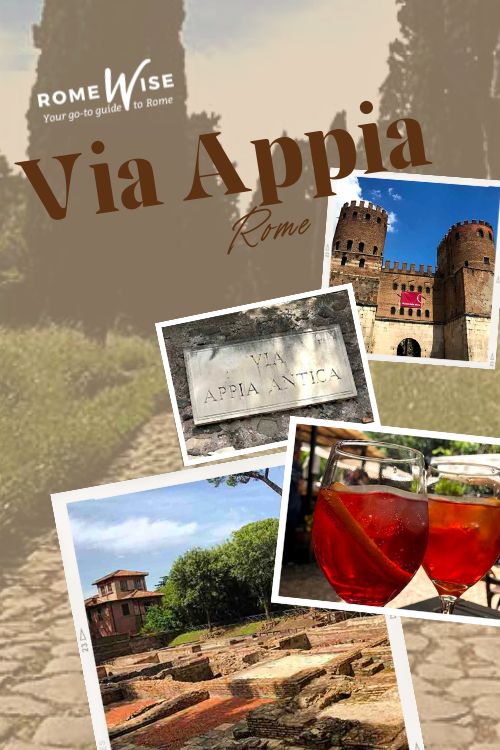- Sign up & get a FREE ebook Subscribe NOW!
- Romewise Home Page
- Via Appia Rome
Via Appia Rome
Wander the Via Appia Rome, 'queen of roads', ancient Rome’s original super highway and one of the greatest examples of Roman engineering!
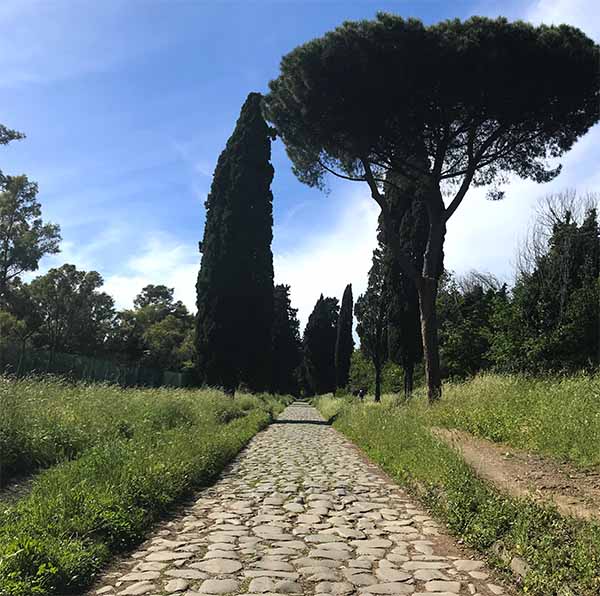 There aren't many activities more enjoyable in Rome than walking or taking bikes along the Appian Way
There aren't many activities more enjoyable in Rome than walking or taking bikes along the Appian WayVia Appia in Rome - Everything you need to know
The Appian Way is one of the best ways to understand ancient Rome and see how the ancient Romans lived - read on to discover more about it, including:
- What is the Via Appia Rome?
- Where is the Via Appia?
- Is visiting the Appian Way worth it?
- History of the Via Appia Rome
- How do I get to Via Appia Rome?
- What to see along the Via Appia Antica
- Should I take a tour of the Via Appia?
- Where to eat on the Via Appia Antica
What is the Via Appia Rome?
The Via Appia (also referred to commonly as via Appia Antica, or the [ancient] Appian Way) is a Roman road.
It starts in central Rome, and ends in Brindisi in southern Italy, approximately 450km/280 miles from Rome.
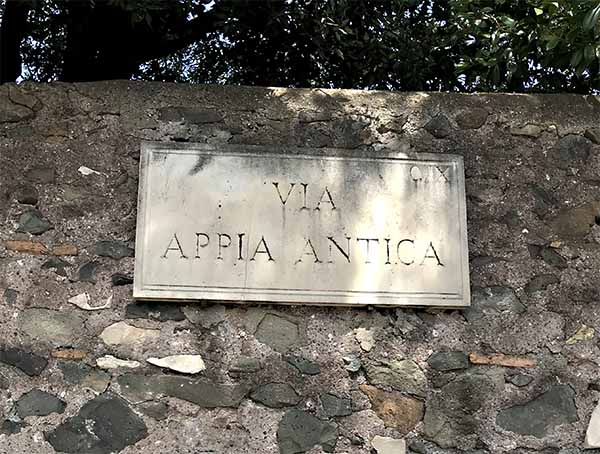 The Via Appia Antica was dubbed 'regina viarium' by the Romans, an affectionate nickname that translates as '[the] the queen of roads'.
The Via Appia Antica was dubbed 'regina viarium' by the Romans, an affectionate nickname that translates as '[the] the queen of roads'.More than just an old road, the first 10km (6 miles) of the road lies within a regional park called Parco Regionale dell'Appia Antica, a regional park charged with the preservation of this ancient super highway.
💪 Rome by Land and Water 💪
This experience is perfect for adventure seekers! Cruise the Tiber, bike through scenic routes, and visit the historic Appia Antica to experience Rome’s beauty by land and water.
Where is the Via Appia in Rome?
In ancient Rome, the the Via Appia Antica officially started at the Roman Forum.
These days, you’ll find the start of the Appian Way at the junction of Via di Porta San Sebastiano, Viale di Porta Ardeatina and Viale delle Mura Latine, at Museo delle Mura.
Is the Via Appia Rome worth visiting?
The short answer is ‘yes’!
The Appian Way offers something for everyone; for history lovers you’ll find thousands of years of history along its route, for nature lovers you’ll find fresh air and peaceful walks, and everyone else, you'll simply have a lovely day taking a break from hustle and bustle of the centre of Rome.
The perfect 3-day itinerary in Rome
Trying to figure out how to organize your visit to Rome? I've got the perfect 3-day itinerary for first-time visitors (or those who have not been here in a while.) It works for a 2.5 day visit as well.
In my 3-day itinerary, you'll see all the major must-see Rome attractions like the Vatican, Colosseum, Trevi Fountain, Pantheon, Piazza Navona, Spanish Steps, and much more.
And if you have more time, or want suggestions for extra/other things to do, you'll find that there too.
Visit my page with the best 3-day itinerary in Rome for first-timers.
History of the Via Appia Rome
Construction of the Appian Way was started by Appius Claudius Caecus in 312 BCE (during the time of the Roman Republic).
This is where the name ‘Appia’ comes from, a modern translation of Via Appia meaning would be 'Appius' Road'.
The principal purpose of the road was just like a modern transport system; to enable the faster movement of people, trade and armies.
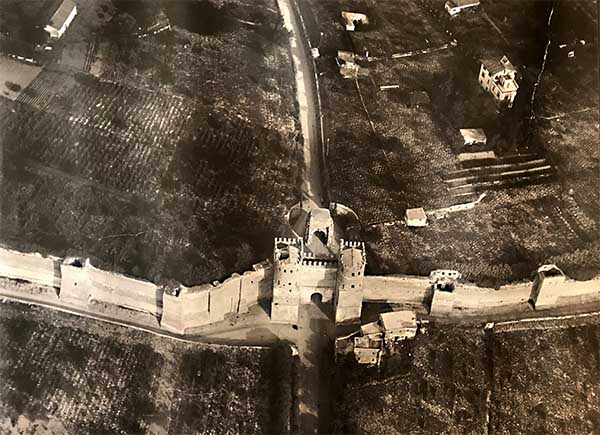 This incredible aerial photography from the early 20th century shows the Appian Way running through the Aurelian Walls at Porta San Sebastiano and through the Arch of Drusus
This incredible aerial photography from the early 20th century shows the Appian Way running through the Aurelian Walls at Porta San Sebastiano and through the Arch of DrususOver the ensuing decades Rome’s dominion rapidly increased as it conquered swathes of southern Italy.
For Rome it was key to consolidate their hold on the area, and being able to move resources and armies quickly was fundamental to this.
The Via Appia was constructed in sections as the influence of the Roman Empire spread further south, where the road eventually ends in Brindisi.
Since the final section was added in 264 BCE, parts of the Appian Way have remained in use ever since, and was even expanded with a new branch by emperor Trajan, aptly named the Via Appia Traiana.
If you follow the entirety of its route through southern Italy you’ll find modern roads have replaced it in parts, whereas in others the original Roman paving remains.
Do you know why the Romans said ‘All roads lead to Rome’?
Because all of their roads literally did lead to Rome; no matter where you were – whether in northern Britannia (England) or southern Mesopethemia (Kuwait), there was no other city called Rome, so by following their incredible road network, you’d always end up in Caput Mundi ‘the capital of the world’.
How do I get to Via Appia Rome?
Visiting the Via Appia Antica couldn’t be easier, or cheaper.
In fact, if you want to just walk or bike the ancient road you can do so without paying anything!
The park in which the Appian Way starts, the 'Parco Regionale dell'Appia Antica', is free to enter to everyone.
Note that some sites along the course of the Via Appia Antica do charge for entrance, see more on this below!
You have a range of options for where to start your exploration of the Appian Way in Rome.
For simplicity I’ve summarized these here, but feel free to mix and match, there’s no right or wrong way to visit!
The Via Appia was the first site in Rome that I visited, on my first ever visit to the Eternal City, way back in 2013.
My partner and I were staying in a nearby hotel so it felt appropriate to start our trip on the Appian Way. However, we didn’t do any research and got promptly lost – you won’t make the same mistake as us by using this page!
The ‘Ancient’ Route
- Start your journey overlooking the Roman Forum from Via della Consolazione, before heading towards Via Luigi Petroselli and then on to Via dei Cerchi.
- Following the Via dei Cerchi will lead you to the Circus Maximus, where by continuing southeast you'll merge on to the Viale delle Terme di Caracalla.
- Follow the signs for the Via Appia Antica, passing the epic Baths of Caracalla on your right.
- Continue to follow the brown signs which will guide you along the route of the Appian Way.
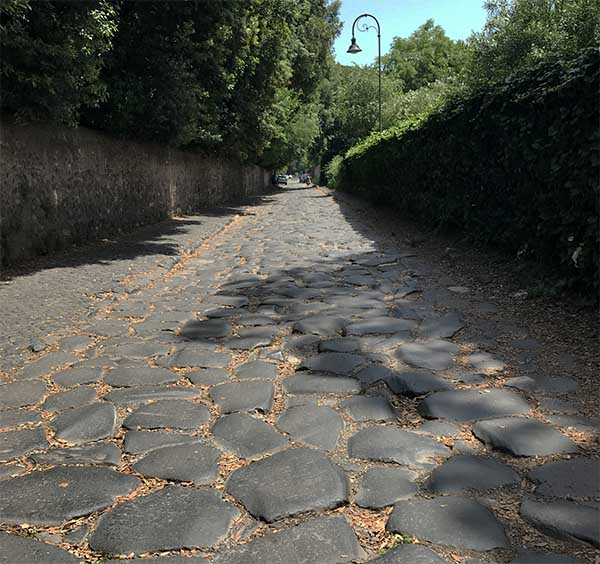 By opting for this route you will be following in the footsteps of some of the greatest Roman figures such as Julius Caesar who would have taken this exact route out of the city!
By opting for this route you will be following in the footsteps of some of the greatest Roman figures such as Julius Caesar who would have taken this exact route out of the city!The ‘Modern’ Route
- Start your journey at the Colosseum – for details on getting to (and visiting) the Colosseum, visit our dedicated page here.
- Take the public bus 118 from the bus stops near the Colosseo metro stop.
- Get off the bus at Porta S. Sebastiano/Sepolcro Scipioni and head southeast along the route of Via Appia Antica, following the brown tourist signs and paying close attention to the specific signs for various attractions and landmarks.
The ‘Reverse’ Route
Start your journey at the Villa of the Quintilli on the outskirts of Rome.
To get here from the centre of Rome you can either take a taxi or the public bus 118 from the Fori Imperiali/Campidoglio stop to the Via Appia Pignatelli stop, before taking a short walk.
💀 Discover the secrets of Rome's catacombs and most famous crypt 💀
Venture into ancient catacombs where early Christians found refuge, walk along the historic Appian Way, and brace yourself for the eerie Capuchin crypt—a unique reminder of life's fragility, adorned with monks' bones.
With comfortable minibus transport, this is a memorable dive into Rome’s mysterious past.
What to see along the Via Appia
For the purpose of this guide I am focusing on the section of the Via Appia that runs from the center of Rome to the Villa of the Quintilli.
Along the route there are countless fascinating attractions to visit (including dozens of Roman monuments and not one, but two major Christian catacombs!) and if you wanted to see everything, you’d have to split your visit across at least a couple of full days.
As a quick reference I’ve put together the following list of the key sites and note, if you are thinking to start your visit at the Villa Quntilli, simply scroll down and work backwards!
Wondering if you can stay on the Appia Antica?
There are some great accommodation options that put you right in the heart of ancient Rome - take a look at some suggestions here!
The Circus Maximus (Circo Massimo)
This was, and still is, the largest entertainment venue ever constructed.
During its heyday up to a quarter of a million people would be here watching chariot racing and other games.
The Circus Maximus is well worth exploring in more detail.
The Baths of Caracalla
Welcome to one of ancient Rome’s largest public bathing complexes!
Opened in 216 AD during the reign of emperor Caracalla, now these incredible ruins hosts Rome’s summer opera program each year.
The Arch of Drusus
This imposing structure is most likely the remains of a triumphal arch, much like the arches of Constantine, Titus and Septimius Severus in central Rome.
Its position inside the walls of Rome suggests it was built to honor someone significant, who also wanted to send a clear message to any visitors using the Appian Way to enter the city.
Museo delle Mura (Museum of the Walls) at Porta San Sebastiano
Inside the restored gatehouse you will find a small museum dedicated to Rome's city walls.
Once inside, be sure to follow the itinerary which will take you onto the roof the gatehouse for some special views of the area, and along the walls themselves!
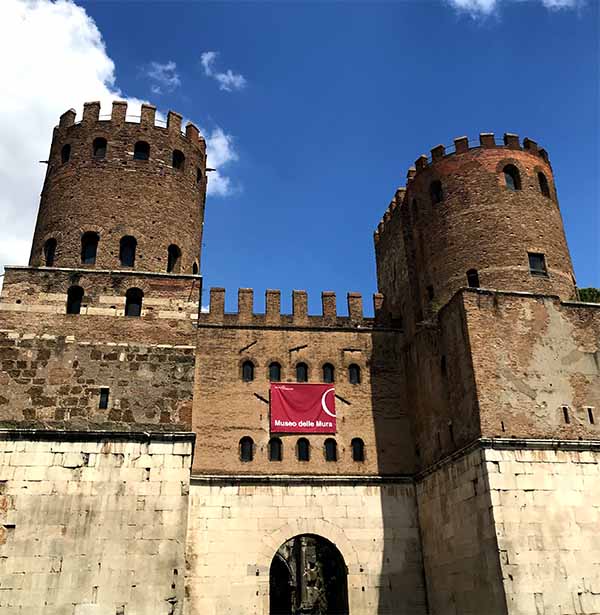 In ancient times this gatehouse was named 'Porta Appia' in honor of the road that passed through it.
In ancient times this gatehouse was named 'Porta Appia' in honor of the road that passed through it.Church of Domine Quo Vadis
This church is built on the spot pro-ported to be where Saint Peter saw a vision of Jesus Christ as he fled Rome and emperor Nero's persecution of Christians.
He asked Jesus 'domine quo vadis?'; 'Lord, where are you going?' to which Christ replied that he was going to Rome to be crucified once again.
This gave Peter the courage to turn around and return to Rome, where he was ultimately crucified himself.
If you have time, visit inside the church to see stone reported to feature Jesus Christ's footprints, imprinted on the paving that same day that Peter saw his vision.
Catacombs of San Callisto (St Callixtus)
The Catacombs of San Callisto are one of Rome's most significant catacomb complexes with estimates putting the tunnels at over 20km (12 miles) making it the Eternal City's largest.
Several early popes were buried here, along with hundreds of thousands of other souls across five levels.
Disclosure: If you make a purchase through a link on this page, I may receive a small commission - at no extra cost to you. Thank you for supporting my site!
Catacombs of San Sebastiano
These catacombs started life as a mine in ancient times - when the Romans had depleted the mine's resources, they began burying deceased slaves and freedmen here in simple graves.
As time went on, more elaborate monuments were constructed to commemorate the dead until the site was covered with the construction of a Constantine-era basilica.
For more information about Rome's catacombs check out our page here.
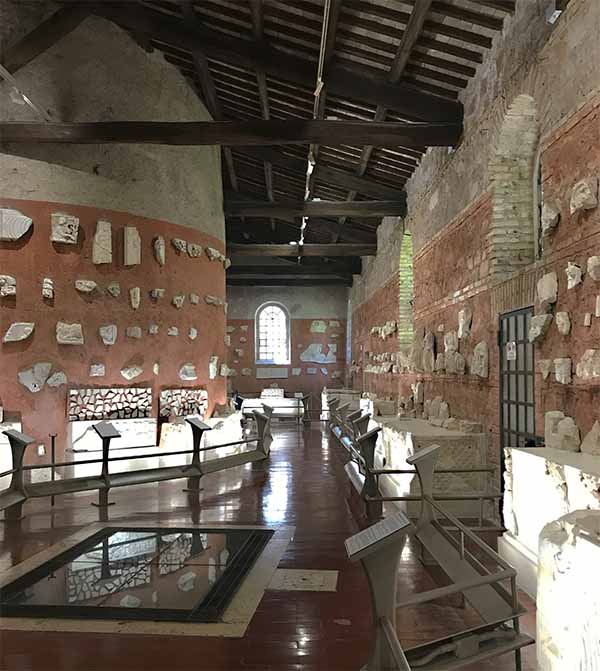 Before you enter the catacombs, be sure to explore the small museum featuring fragments from Roman burials.
Before you enter the catacombs, be sure to explore the small museum featuring fragments from Roman burials.Mausoleum & Circus of Maxentius
Here you will find two major Roman monuments, constructed for, and in honor of emperor Maxentius.
The first is a large circular tomb originally intended for Maxentius, in the same style as the Mausoleum of August and Hadrian (the latter now being the Castel Sant'Angelo), which ultimately became the resting place of the emperor's son Romulus who died unexpectedly.
The second is a large stadium and entertainment venue which would have been part of the emperor's out of town villa and estate.
Tomb of Cecilia Metella
This tomb is one of the most famous monuments along the Appian Way due to its imposing size and generally good state of preservation.
Built to house the remains of Cecilia Metella, the daughter in-law of Rome's richest man (Marcus Crassus) around 20 BCE, it then became a fortress in the middle ages, and now its possible to visit the interior of the tomb space with an Appia Antica Archaeological Park ticket.
These tickets can be purchased here at the tomb and other select sites in Rome - visit the official website for full details (you can also buy online).
Before venturing further I recommend stopping at the Appia Antica Caffé for refreshment, or to pick-up some rental bikes to continue your journey.
Capo di Bove Complex
This might be one of my favorite places in Rome (I can never decide between here, the Roman Forum or the Pantheon!) because it was here where my girlfriend and I initially stopped to get our bearings after becoming lost on our first ever trip to Rome.
Compared to a lot of monuments, this is a simple attraction.
You'll find excavations of an ancient villa with private bath complex, surrounding gardens and a small museum about the site and the Appian Way.
However, you'll almost always find it empty and there is just something special about exploring a site with no one else around!
Note that entry requires an Appia Antica Archaeological Park ticket which can be purchased in advance online here.
Stretch of tombs
As you head further along the Appian Way you'll find the old road comes out into more open territory.
Along this section you will see several tombs lining the road, some in great condition, others not so much.
For the Romans it was the custom for the dead to be buried outside of the city, and for those wealthy enough, they had ornate tombs line the major roads as a sign of the power and respect they commanded while alive and wished to carry through to the afterlife.
Villa of the Quintilli
This sprawling estate was built by the Quintilli brothers in the second century CE.
You'll find remnants of the main residences, along with private baths, a hippodrome and theater.
Emperor Commodus took over the villa 182 CE because he liked it so much, unfortunately putting the then-owners to death for resisting his initial request to requisition it.
Should I take a tour of the Appian Way?
Personally I feel that the Appian Way is one of the few sites in Rome that you can consider exploring at your own pace, without a tour guide or as a part of a tour group.
Why? Maybe because of the sentimental value I attached to it being the first site in Rome I discovered myself, but also because its size and openness lends itself well to self-exploration.
That said, if you feel a little overwhelmed by the scale of the Appian Way, or are limited for time, do consider hiring a tour guide or joining one of the many Appian ways tours Rome, especially if you want to visit one or more of the catacombs here.
Ready to plan your trip?
Book your train
Planning to travel between cities in Italy and other parts of Europe?
Use Trainline to see all the different options available across the different rail companies.
Find your hotel
Find your perfect place to stay in Rome.
Use Booking.com to choose between hotels, guesthouses, and self-catering apartments in neighborhoods throughout the Eternal City.
Buy your TurboPass
Purchase the convenient Turbopass and visit all of Rome's top attractions including the Colosseum, Pantheon, and Vatican.
With one handy pass, it's all included.
Where to Eat on the Via Appia Rome
Appia Antica Caffé (mentioned previously as the recommended place for bike rental) – this is my go-to spot along the Appian Way for refreshment.
The family who run the Appia Antica Caffé offer a simple menu of home made traditional pastas, salads and sandwiches are perfect for a light lunch to refuel on your journey.
L'Archeologia – While I have not (yet) dined at this restaurant, it comes highly recommended from a friend who I trust completely!
What makes this restaurant particularly special is that it's housed inside restored Roman ruins, with the wine cellar occupying an ancient tomb.
Beyond the above recommendations you’ll find a number of other restaurants, trattorias and hosterias along the Appian Way.
I cannot vouch personally for any of these, but know that most have been there a very long time so they must be doing something right!
Romewise's Top Travel Resources
Ready to book your trip to Rome? Take a look at these helpful links to companies we use and trust:
- Keep your travel spending simple with the Wise card, which removes all the worry about exchange rates and high transaction fees all over the world
- Search for and book your perfect accommodation
- Our complete guide to what to pack for Rome
- The number one travel accessory, a multi-point travel adapter and voltage converter
- Browse a huge range of tours in Rome and beyond
- Experience unique tours and special access to Rome's most popular sights
- Protect yourself with comprehensive travel insurance
Within this post there are some affiliate links for products and services. For more details about our affiliate policy click here.
Get your 100% free Rome trip planner now!
Simply sign-up today for our free newsletter and get the Romewise Quick Start guide to Rome:
We are committed to respecting your data. Click for our Privacy Policy.
Comments? Questions? Suggestions?
Please come over to the private Romewise Facebook group and join in the conversation.
You will often find me there, happy to answer your questions / comments!
You will also meet other Rome lovers and experts, too.
What are you waiting for?
- Romewise Home Page
- Via Appia Rome

